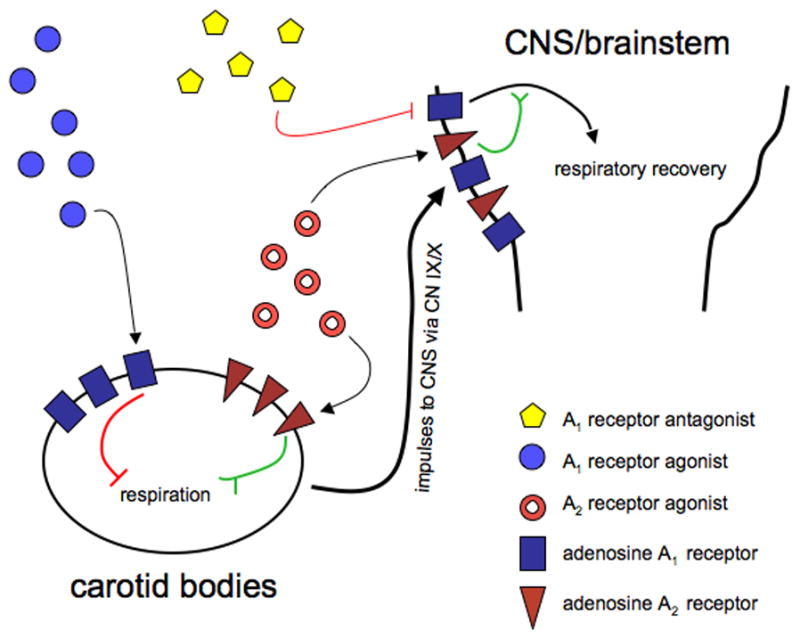Figure 3.

This is a schematic that illustrates interaction of peripheral and central adenosine receptor in respiratory recovery. Activation of peripherally located A2A receptors in the carotid bodies excites respiratory activity which is transmitted to the CNS via the IX/X cranial nerves. On the other hand, activation of peripheral adenosine A1 receptors inhibits respiration and can dampen induced recovery. Central blockade of adenosine A1 receptors releases the inhibitory effect of A1 receptor activation on respiration and the result is disinhibition or excitation. Simultaneous administration of the adenosine A1 receptor antagonist DPCPX and peripherally acting A2a agonist, CGS-21680 can therefore elicit enhanced recovery via an apparently additive effect through a direct excitation combined with a disinhibitory effect.
